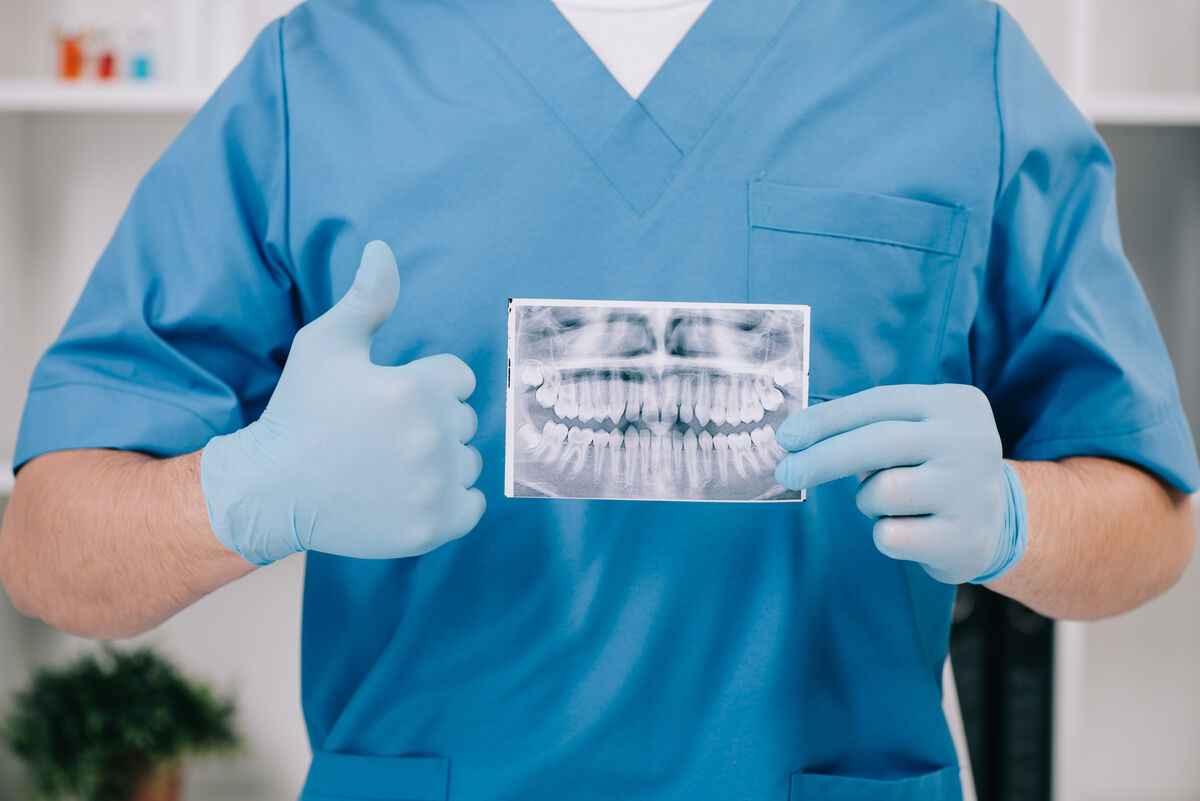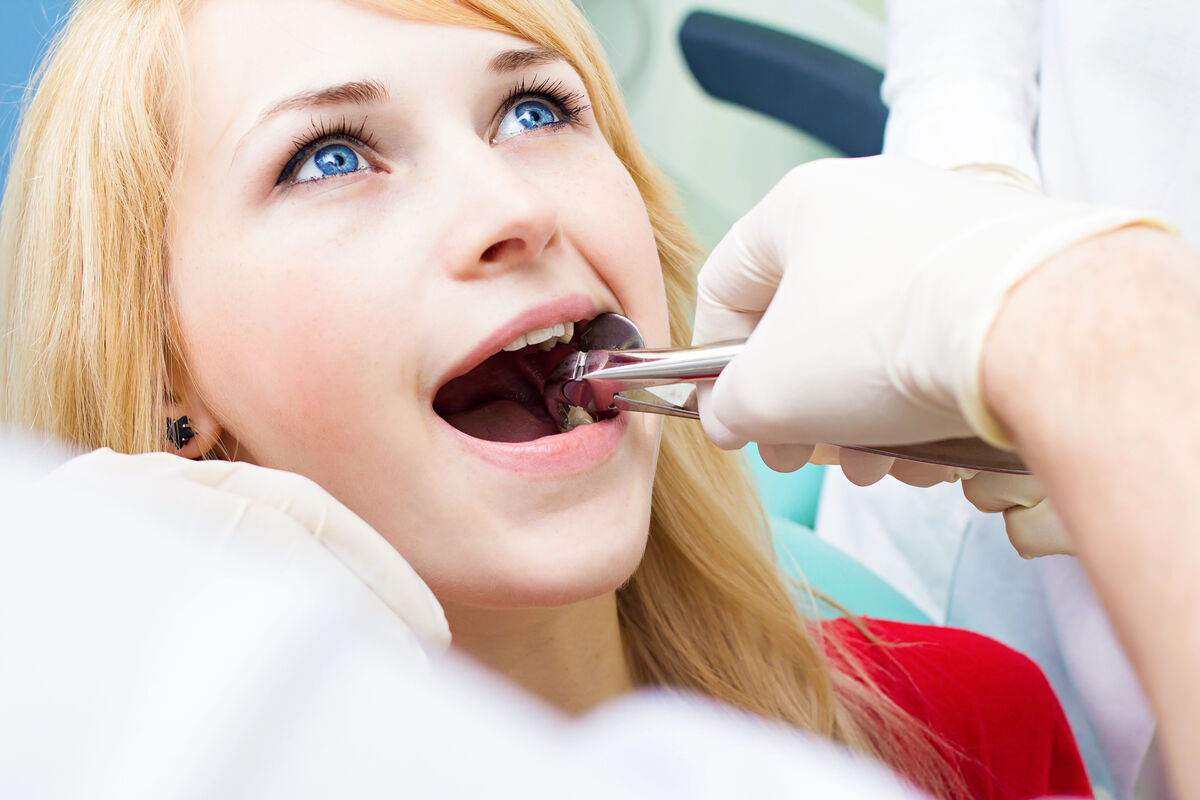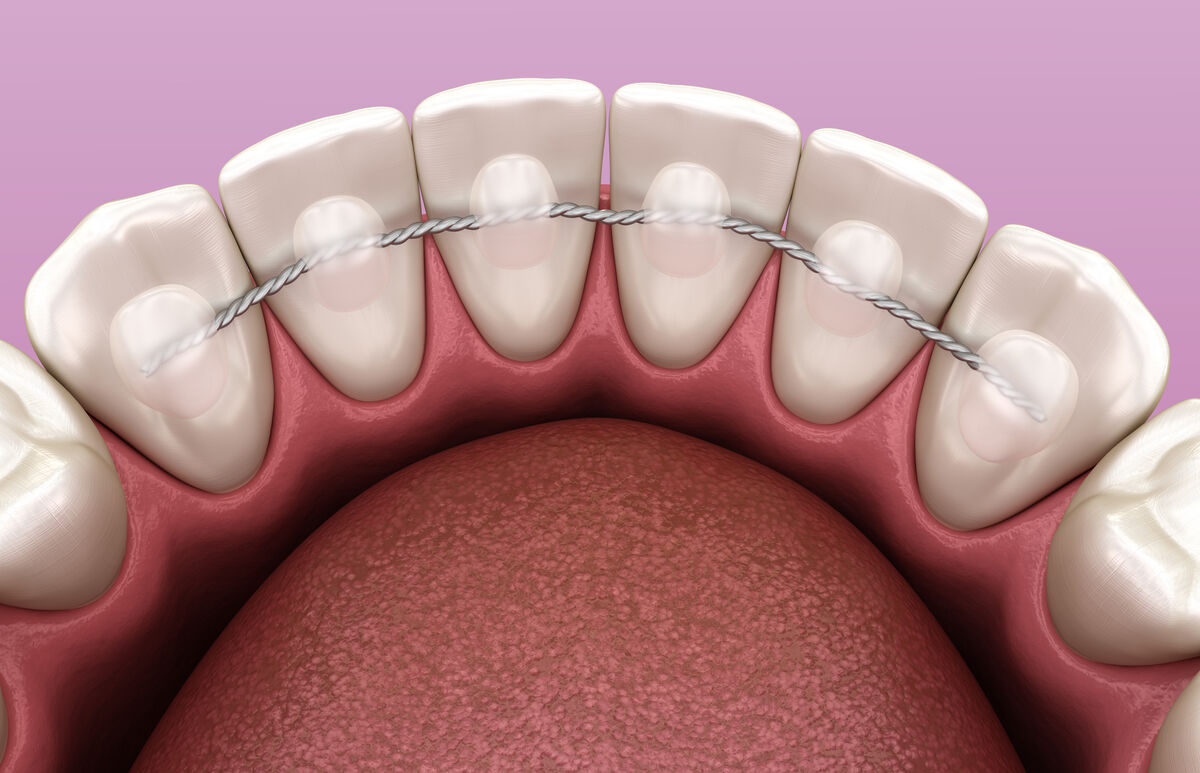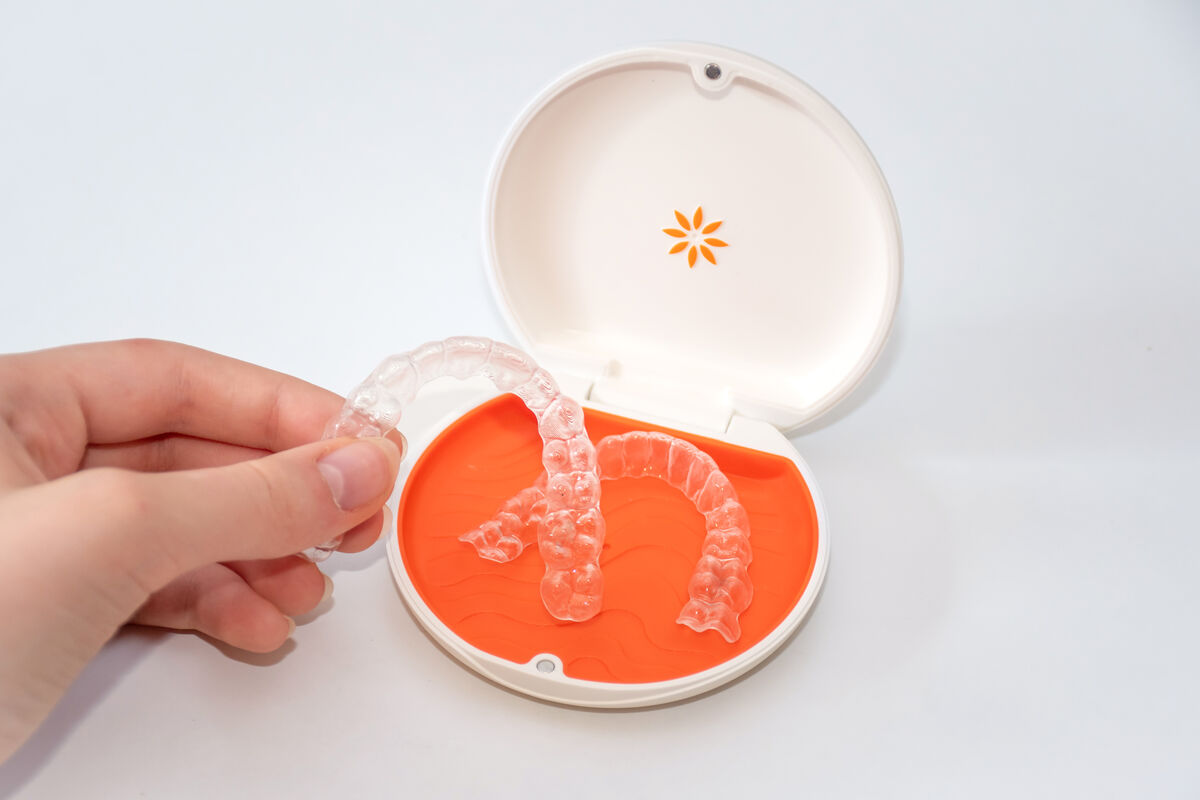Table of Contents

Wisdom Teeth: A Guide to Symptoms, Surgery, and Recovery
What Are Wisdom Teeth?
Wisdom teeth are the third molars located at the very back of the dental arches. Considered a relic of evolution, they once had the same chewing function as other molars, playing a major role in chewing tougher foods like certain vegetables and uncooked meat.
With the evolution of lifestyles, humans have lost the need for wisdom teeth. For our needs, the human jaw is composed as follows:
- Incisors: There are 8 incisors. The mouth has 4 central incisors and 4 lateral incisors. They have a single root and are used for cutting.
- Canines: Like incisors, canines have only one root. There are four of them, and they are used to tear food.
- Premolars: Premolars are used to grind food. There are 8 premolars, and they have one or two roots.
- Molars: Molars also grind food, but more powerfully than premolars. Generally, molars have three roots and there are 8 of them (not including wisdom teeth).

Why Do Wisdom Teeth Need to Be Removed?
Contrary to popular belief, wisdom teeth do not always need to be removed. Indeed, it is possible to keep wisdom teeth if they erupt normally and do not cause pain or complications.
Wisdom teeth can cause certain problems and may be subject to preventive or curative extractions. Removing wisdom teeth may be necessary in the following cases:
- When they are poorly positioned (impacted): Wisdom teeth can be trapped in the bone, stuck, or positioned horizontally.
- When they cause pain: Wisdom teeth can create inflammation and cause infections. Pericoronitis, an inflammation of the tissue surrounding the tooth, is the most common infectious complication. It occurs when a wisdom tooth is partially erupted, and bacteria can get between the gum and the tooth.
- When they cause dental cavities: Difficult to reach with a toothbrush, wisdom teeth are frequently affected by cavities. To address the risk of recurrence, extraction may be considered.
In most cases, these complications concern the lower wisdom teeth. The removal of wisdom teeth can be done preventively. It is recommended to have your teeth examined regularly to prevent complications and to plan an extraction at the most opportune time.
Do Wisdom Teeth Cause Other Teeth to Shift?
The extraction of wisdom teeth is not an orthodontic indication. Wisdom teeth are wrongly accused of causing other teeth to move and increasing dental crowding by exerting pressure on other teeth as they erupt. Contrary to this widespread belief, wisdom teeth are not the cause of other teeth shifting.
Numerous studies have shown that wisdom teeth are not the main cause of movement of other teeth. Even when they are extracted, it is not uncommon for dental shifting to occur later.
The reasons for removing wisdom teeth are purely dental and concern potential pain, decay, and infections. It is therefore false to think that orthodontic relapse may be linked to the growth of wisdom teeth and to extract them for the sole purpose of preventing tooth movement.
When Should Wisdom Teeth Extraction Be Planned?
To determine if wisdom tooth surgery is required, a clinical and radiological examination will be necessary. The dentist or oral surgeon will determine if the wisdom teeth have adequate space to erupt fully and if they pose a risk for future problems.
Partially or fully impacted wisdom teeth can also be the source of pain and infectious problems. It is recommended to make an appointment with a dentist or oral surgeon if the wisdom teeth present symptoms. These may include pain, infections, cavities, or damage to other teeth. The following symptoms may alert patients:
- Pain and swelling in the jaw;
- Red and/or swollen gums;
- Pain in or around the wisdom teeth;
- An unpleasant taste in the mouth and bad breath.
However, some impacted teeth may show no symptoms and still be responsible for numerous complications. Regular clinical and radiological examination is essential to determine the right time to plan a wisdom tooth extraction.

How Is a Wisdom Tooth Extraction Performed?
Wisdom tooth extraction is a very common procedure that can be performed by a general dentist or, more commonly, an oral and maxillofacial surgeon. It can be done in a dental office or a clinical setting, under local anesthesia, IV sedation, or general anesthesia. All four wisdom teeth can be extracted at once. If the patient shows signs of anxiety, sedative medication can be offered.
What to Do Before a Wisdom Tooth Extraction
Before the extraction, the dentist or surgeon will conduct a preliminary examination. This will involve examining the position and formation of each wisdom tooth and studying the patient's joints and jaw. Using a panoramic X-ray, the specialist will also look for the presence of cysts or other pathologies.
During this pre-operative appointment, the details of the extraction will be explained to the patient. This is the ideal time to ask any questions about the procedure and to share any apprehensions.
What Happens During the Wisdom Tooth Surgery?
The duration of the surgery varies depending on the number of teeth to be extracted and their position. In most cases, the removal is performed under local anesthesia or sedation. The surgeon numbs the area, makes an incision in the gum if necessary, removes any bone obstructing access to the tooth root, and performs the extraction. Sometimes, the practitioner must section the tooth to extract it more easily and to minimize trauma. Once the tooth is extracted, the area is properly cleaned.
To close the wound, the surgeon places dissolvable stitches. These stitches disappear on their own in less than three weeks. Rarely, they can cause irritation or infection, in which case a follow-up appointment may be needed for their manual removal.
Although it is not pleasant, the removal of wisdom teeth does not hurt during the procedure itself. The days following the surgery can, however, involve pain and discomfort, which can be easily managed with pain relievers prescribed by the practitioner.

What Is Recovery Like After Wisdom Tooth Extraction?
To promote healing, several precautions should be taken on the day of and the day after the procedure. After the surgery, it is common for some bleeding to persist for a few hours. The patient is asked to bite down on gauze pads for an hour or two. It is recommended to stay calm, limit physical exertion, and not eat until the bleeding has stopped. Avoid smoking, drinking alcohol, and eating hard foods. Finally, do not brush your teeth near the extraction sites.
Wisdom tooth extraction can cause swelling in the cheeks. To prevent swelling, an ice pack can be applied to the cheeks for thirty minutes, every thirty minutes, for the first 24 hours.
Generally, it is advisable to plan for three days of recovery before being able to resume even light physical activities. After three days of rest, the patient can return to work or school. A week after the surgery, it is possible to resume normal activities. For sports or eating hard foods, it is better to wait two weeks.
What to Eat After Wisdom Tooth Surgery
Healing from wisdom tooth extraction requires a dietary adjustment to avoid complications. For the first three days, it is advisable to consume the following:
- Mashed fruits, applesauce, or smoothies;
- Yogurts, puddings, custards, and ice cream;
- Mashed vegetables, in soups, and preferably cold.
After these first three days, the patient can evolve their diet by integrating lukewarm and soft foods such as scrambled eggs, mashed vegetables, soft bread, lukewarm soups, steamed vegetables, or white fish. After wisdom tooth extraction, it is not recommended to eat hot or hard foods. Also, it is not recommended to drink with a straw, as the suction can dislodge the blood clot and cause a painful condition called dry socket.
Generally, patients can start eating normally again 7 to 10 days after the procedure.
What Are the Risks After a Wisdom Tooth Extraction?
Post-operative experiences vary among individuals. However, some symptoms may be more common than others. After wisdom tooth extraction, the following may occur:
- Pain at the treated site;
- Muscle soreness affecting the face, neck, and jaw joints;
- Discomfort when speaking, sleeping, opening the mouth, and chewing;
- Headaches, dizziness, and nausea;
- Swelling in the cheeks, chin, lips, and neck, which can cause a sore throat;
- Infection (including dry socket), which may require antibiotics;
- Temporary or, rarely, permanent numbness of the tongue and lower lip.
To limit risks, it is advisable to take the prescribed medication as soon as possible and to follow the recommendations given by the practitioner.
How to Prevent Teeth from Shifting
Many factors other than wisdom teeth can cause teeth to shift over time. Teeth are part of a dynamic chewing system. To respond to the forces applied to them, teeth have a slight mobility.
Throughout an individual's life, teeth move under the various external forces of varying intensity they are subjected to (chewing, pressure from the mouth, lips, etc.). Even if the alignment of the teeth is impeccable naturally or after treatment, some misalignments can appear or reappear. To stabilize the position of the teeth or delay dental changes, it is possible to wear a retainer.

What Is Orthodontic Retention?
To reduce the effect of various forces on the teeth and ensure better stability of the final result obtained after orthodontic treatment, retention devices are provided by the orthodontist. There are two types of retainers:
- Fixed: Fixed retainers are permanently bonded to the teeth. They can only be removed by the orthodontist.
- Removable: Removable retainers are taken out at the patient's discretion, especially for meals or for brushing teeth.
Changes in the alignment of teeth can be observed without wisdom teeth being involved in these movements. To help teeth maintain their alignment after orthodontic treatment, orthodontic retainers are a solution to consider.

